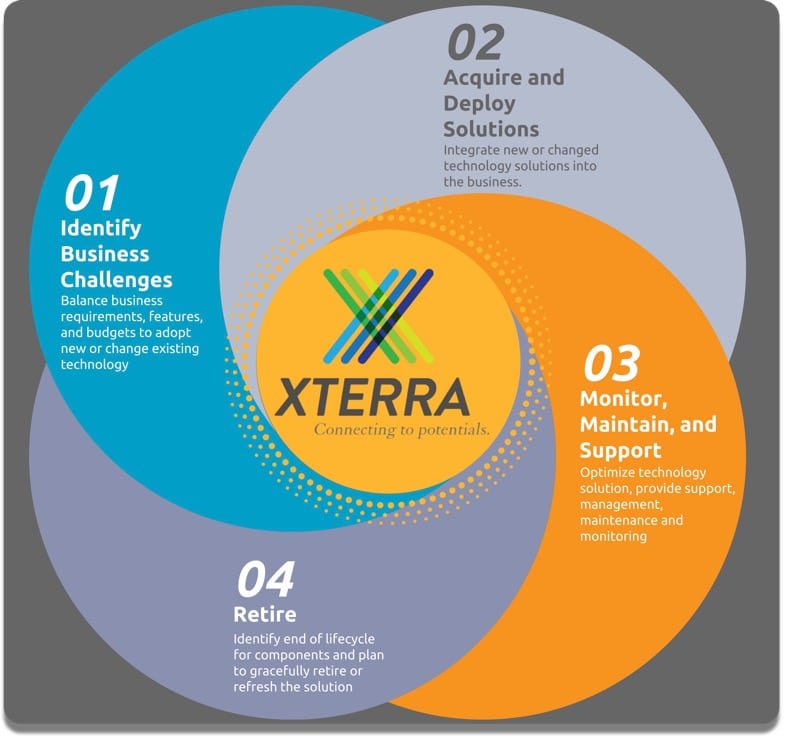
6 Proven Tips to Keep Your Systems Up and Running
You’ve just settled in at the office for a productive workday when the power goes out. No big deal – your team works on laptops and can connect to personal hotspots. The only challenge is, your company still has some applications still hosted on an internal server, which is currently offline. This includes the company’s primary file server, which makes it extremely difficult to support clients.
So instead of handling business as usual, your team is spending most of the morning explaining to clients that a power outage that is impacting their ability to provide service. If you start to add up the lost client revenue from today’s outage, it can easily add up to tens or hundreds of thousands of dollars (or more depending on your company size). Not to mention the direct labor costs wasted.
Not every downtime scenario will be so drastic (although some could be far worse!), but there’s no denying that every downtime event means potential lost revenue for you and your clients/partners. Mitigate your risk of financial impact with the right approach and proactive measures. In today’s post, we’ll talk about 6 tips to reduce IT downtime, including what preventative measures you should take, who should be helping manage your systems, and how external support may benefit your organization.
The Costs of Technology Downtime
Though it’s difficult to quantify, technology downtime can be costly for your business in terms of lost revenue, reduced customer satisfaction, reputational damage, and frustrated employees who can’t work. An overwhelming 82% of companies have experienced at least one unplanned downtime incident over the past three years. Most have had multiple downtime events – making it imperative that you take steps to reduce the risk as much as possible.
Strategies to Reduce Risk & Impact
There are several strategies you can implement to reduce the risk and impact associated with technology downtime:
- Evaluate IT business risks
- Identify critical IT services and perform a business impact analysis to understand the level of redundancy business impact in the event of an IT outage. Every business has a different risk tolerance when it comes to IT downtime. For example, a bakery will have a very different tolerance to a network outage compared to a bank that provides online services to its clients.
- Keep hardware up-to-date:
- Outdated hardware is more prone to failure, which can lead to downtime while the issue is fixed. Upgrading to newer hardware can reduce the likelihood of hardware failures and the associated downtime.
- Keep software up-to-date:
- Software Stability: Updates often include bug fixes, which can address stability issues that can cause software crashes or other problems that can lead to IT downtime.
- Implement Security Best Practices:
- Use Multi-Factor Authentication (MFA) and Identity Management: Safeguarding who you are and how you get to your data is essential to reducing the risk of unauthorized individuals gaining access to your system and data.
- Implement Security training for your staff: Ransomware and stolen data can take your business down. In today’s threat landscape, end-users are the most likely cause for a security incident. Building up your human firewall pays big dividends towards reducing your cyber risk exposure.
- Vulnerability Management: By proactively identifying and managing vulnerabilities in your environment, you can stay ahead of the bad actors and remediate security vulnerabilities before they exploit them.
- Use a Security Operations Center (SOC) or Security Incident Event Management (SIEM) system to monitor your environment for security issues. The best hackers sit in your system and wait for the right opportunity before they pounce. Having all your critical IT systems logging to a central location that can correlate events using AI and Machine Learning, escalating any suspicious actions to a human security analyst 24/7, is essential in today’s threat environment.
- Implement Backups:
- Backups can help you recover quickly from a disaster such as a hardware failure, natural disaster, or cyberattack. By having an immutable backup of your data and systems, you can restore your systems and minimize the downtime associated with such events.
- Pro tip: Make sure your backups include protection for not only on-premise systems and data but also cloud services, including Office 365 and Google Workspace. Many companies are surprised to find out that many major cloud providers put the responsibility for backups on their customers. Don’t make that mistake.
- Have Cyber Liability Insurance Coverage:
- Rapid Incident Response: Most cyber liability insurance policies provide access to incident response teams that can help your business quickly respond to cyber incidents, including malware infections, data breaches, and cyberattacks. These teams can help minimize the impact of the incident and reduce your downtime.
- Data Recovery: Cyber liability insurance policies may cover the costs of data recovery and restoration in the event of a cyber incident. This can help your business recover quickly from data loss incidents and reduce downtime associated with data recovery.
- Business Interruption Coverage: Some cyber liability insurance policies may provide business interruption coverage, which can help your business recover lost income due to a cyber incident. This can help your business avoid financial losses and reduce the impact of downtime on your bottom line.
- Legal Defense: Cyber liability insurance policies may cover the costs of your legal defense in the event of a cyber incident. This can help your business defend against lawsuits and regulatory fines, preventing significant financial loss.
At Xterra, we have developed a proven process to reduce IT downtime. We call it XBITOS – Xterra’s Business IT Optimization System:

XBITOS Phases:
- Onboarding
- Vision Building
- IT Roadmap
- Ongoing Strategic Business Reviews
This proven process incorporates the best practices described in this post and ensures that we are building and managing the right technology to meet your company’s business objectives.
When you are on our XBITOS framework:
- We guarantee no unscheduled downtime
- All unscheduled downtime is eligible for an immediate service credit of our fees.
As business technology continues to evolve, IT downtime will only become more impactful. You can minimize this impact by taking a proactive look at your current IT infrastructure, identifying your organization’s gaps, and taking proactive steps to keep your company protected and focused on what it does best. It may seem like a daunting task to proof your business against the unforeseen, but understanding and mitigating today’s risks will keep you from being blindsided by them tomorrow.
How can Xterra help my business?
Xterra has developed the people, process, and technology to deliver white glove IT services for a fraction of the cost of hiring a full-time staff. We are focused on helping San Francisco Bay Area clients accelerate their adoption of technology solutions to create measurable business value. If you are interested in learning more about how Xterra can help your business, schedule a free consultation.

Aaron is SVP of Business Development at Xterra Solutions, where he helps Bay Area businesses align their IT strategy with real-world business goals. With more than 20 years of experience as a network architect and security advisor, Aaron brings a unique mix of technical depth and business insight to every client conversation. Based in downtown San Francisco, Xterra is known for delivering white-glove managed services with a security-first mindset.
 IT Governance, Security
IT Governance, Security